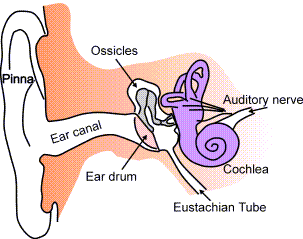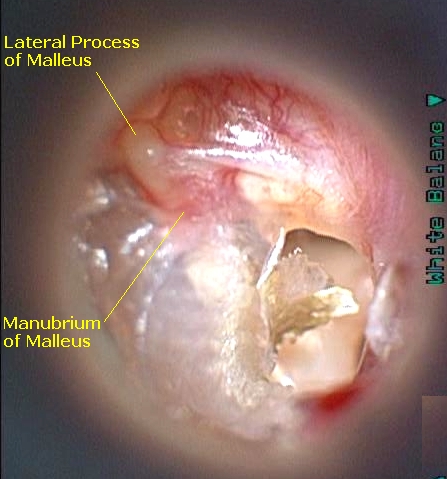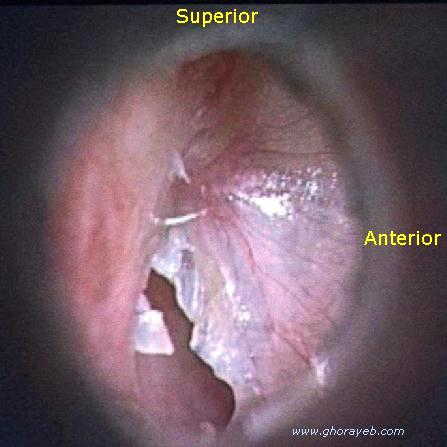Perforated eardrum
| Perforated eardrum | |
 |
|---|
|
Perforated eardrum Microchapters |
|
Diagnosis |
|---|
|
Treatment |
|
Case Studies |
|
Perforated eardrum On the Web |
|
American Roentgen Ray Society Images of Perforated eardrum |
For patient information, click here
Editor-In-Chief: C. Michael Gibson, M.S., M.D. [1]
Please help WikiDoc by adding more content here. It's easy! Click here to learn about editing.
Synonyms and keywords: Tympanic membrane perforation; eardrum - ruptured or perforated
Overview
Rupture or perforation (hole) of the eardrum can occur in infection, trauma (e.g. by trying to clean the ear with sharp instruments), explosion or loud noise. Flying with a severe cold can also cause perforation due to changes in air pressure and blocked eustachian tubes resulting from the cold. This is especially true on landing.
Perforation of the eardrum leads to conductive hearing loss.
The perforation may heal in a few weeks, or up to a few months. Some perforations require intervention - this may use a paper patch to promote healing (simple procedure in the office of an ear, nose and throat specialist), or surgery (tympanoplasty).
Hearing is usually recovered fully, but chronic infection over a long period may lead to permanent hearing loss.
Causes
Ear infections may cause a ruptured eardrum, more often in children. The infection causes pus or fluid to build up behind the eardrum. As the pressure increases, the eardrum may break open (rupture).
Damage to the eardrum can also occur from:
- A very loud noise close to the ear, such as a gunshot
- A rapid change in ear pressure, which may occur when flying, scuba diving, or driving in the mountains
- Foreign objects in the ear
- Injury to the ear (such as a powerful slap or explosion)
- Inserting cotton-tipped swabs or small objects into the ear to clean them
Natural History, Complications and Prognosis
Prognosis
The opening in the eardrum usually heals by itself within 2 months. Any hearing loss is most often short-term. Rarely, other problems may occur, such as:
- Long-term hearing loss
- Spread of infection to the bone behind the ear mastoiditis
- Long-term vertigo and dizziness
Diagnosis
Symptoms
Ear pain may suddenly decrease right after the eardrum ruptures.
After the rupture, the patient may have:
- Drainage from the ear (drainage may be clear, pus, or bloody)
- Ear noise/ buzzing
- Earache or ear discomfort
- Hearing loss in the involved ear (hearing loss may not be total)
- Weakness of the face, or dizziness (in more severe cases)
Physical Examination
Ear Nose and Throat
An otoscope or a microscope is used to look into the patients ears. If the eardrum is ruptured, an opening would be seen, and even the bones of the middle ear may be seen. Sometimes it is hard to see the eardrum because of drainage (pus) from the ear.
 |
 |
 |
Treatment
Medical Therapy
Putting warmth on the ear may help relieve discomfort.
Painkillers such as ibuprofen or acetaminophen may be used to relieve pain.
Antibiotics (oral or ear drops) may be used to prevent or treat an infection.
Keep the ear clean and dry while it is healing
Place cotton balls in the ear while showering or shampooing to prevent water from entering the ear. Avoid swimming or putting your head underneath the water.
Sometimes a patch may be placed over the eardrum to speed healing.
Surgery
Surgical repair of the eardrum tympanoplasty may be needed if the eardrum does not heal on its own.